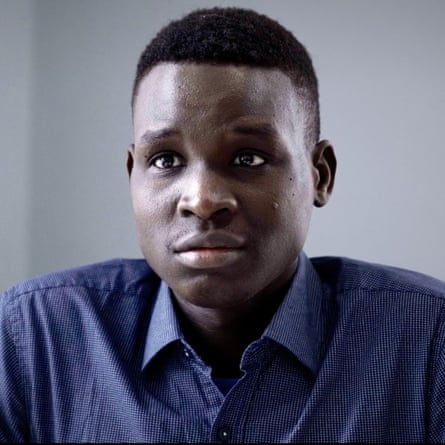Moroccan authorities took a series of fateful decisions that led to the deaths of dozens of asylum seekers attempting to scale the border fence into the Spanish north African territory of Melilla two years ago, survivors and an investigation by an NGO have claimed.
At least 27 migrants and asylum seekers died when up to 2,000 people tried to climb over the fence on 24 June 2022 – the deadliest day in recent memory along the EU land border with Africa – while 70 others are still missing and unaccounted for.
Amnesty International has said the “widespread use of unlawful force” by Moroccan and Spanish authorities contributed to the fatalities and a UN working group of experts described the deaths as evidence of the “racialised exclusion and deadly violence deployed to keep out people of African and Middle Eastern descent”.
The investigation by the Border Forensics NGO, which includes testimonies from survivors and satellite images, has claimed evidence suggests Moroccan authorities pushed the asylum seekers to the border while also increasing its militarisation.
Dozens of survivors told Border Forensics that hundreds of people were forced to move to the southern part of Mount Gourougou – around 6km from the Melilla barrier – after a series of attacks by Moroccan law enforcement agents in the days before the deaths at the border.
“The police started attacking us and throwing stones at us – they destroyed all our food and water – they did this so that we would leave,” a survivor told the NGO.
Analysis of satellite images produced by Border Forensics from the days preceding 24 June shows an increase in the number of troops in several areas along the border, as well as the construction of an additional trench on the Moroccan side of the fence.
“The police came from both sides in order to push us in the same direction,” one of the survivors told Border Forensics. “We couldn’t go anywhere, except towards the fence. We all gathered at the fence and they started to throw teargas grenades at us.”
In the days before the incident, Border Forensics say police carried out several raids on the camps where the migrants and refugees slept rough as they waited for the chance to cross into Spain. The police confiscated food and any cash they could find, leaving people anxious, exhausted, hungry and destitute.

Mahamat Daoud Abderassoul, a 27-year-old Sudanese man who escaped the war in his homeland and survived the events of 24 June 2022, said he and others had been attacked twice in the days before what he termed “the massacre”.
He said: “The Moroccans knew how we were moving and when we were moving. They wanted to direct us towards the border fence where we had no way to escape. That was exactly what they needed, in order to make a larger number of murders. They were preparing the trap. We also spoke with them the days before the massacre and they gave us no alternative but to move from the mountains to their trap.”
The events of 24 June began early in the morning as an increasing number of migrants and asylum seekers made their way into the enclosure and Moroccan police established a perimeter at Barrio Chino, the heavily fortified border crossing. Witness accounts allege that the authorities resorted to aggressive tactics, including hurling stones and firing rubber bullets at migrants.
Reports from the investigative organisation Lighthouse Reports indicate that at least 20 gas canisters were deployed within the area. Amid the chaos and with the teargas leaving people choking and blinded, individuals surged towards the Spanish side of the checkpoint. Some people stumbled, fell and were trampled as others rushed forward.
after newsletter promotion
A spokesperson for Spain’s interior ministry said state prosecutors had investigated the “tragic events” that took place in Melilla two years ago and determined that there was no negligence or rights violations by Spanish Guardia Civil officers that day.
He referred the Guardian to previous comments by the interior minister, Fernando Grande-Marlaska, who has always insisted that officers acted “legally, proportionately and with absolute respect for human rights”. Grande-Marlaska has also said there was no loss of life on the Spanish territory.
The Moroccan government has been contacted for comment. Morocco has previously said its officers acted “with a high level of control and professionalism”, and said that some of those who rushed to the fence were armed with sticks, machetes, stones and knives.
Several testimonies point to the role played by informants recruited by the Moroccan authorities to provide information on the internal organisation of attempts to cross the barriers at Melilla and Ceuta, also a Spanish north African territory.
“During our investigation, survivors mentioned the presence of ‘moles’, or informers, who were among them in the camps,” says the report. “They had apparently been enlisted beforehand by the Moroccan authorities, so that the internal organisation of the migrants, particularly the Sudanese, could be revealed.”
Border Forensics concludes that what it called “the death trap into which the migrants fell” is evidence of a longstanding systemic approach by Europe, Spain and Morocco.
“It was weaved by policies and practices operating in an extended space-time, including European and Spanish policies of externalising migration control established over more than two decades, Moroccan migration diplomacy, impunity for violence perpetrated over many years, and the daily racist repression deployed against black people in the area,” say the researchers. “All these elements combined to form a death trap, which the Spanish and Moroccan law enforcement agents executed on 24 June 2022.”
The NGO says a “fundamental reorientation of European migration policies” and of relations between Europe and the global south would help put an end to the deaths and violence, adding: “As such, beyond the barrier, it is a series of relationships, agreements and legislation that also need to be dismantled.”
Source: theguardian.com


